Rare* 1918 Dated -Meuse-Argonne Offensive Combat Map - "Montmedy" - Sgt. A. T. Bertolette - 108th Field Artillery


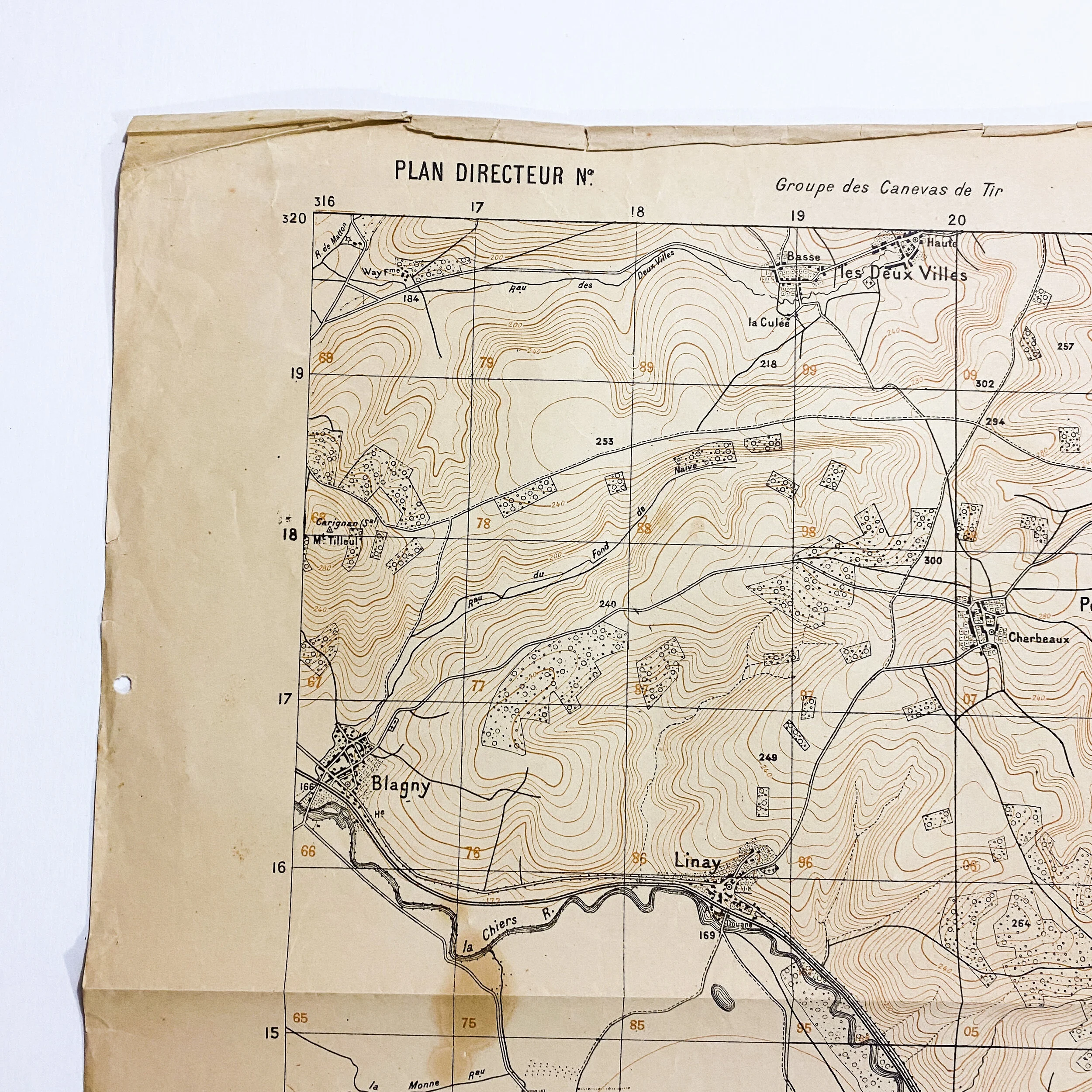
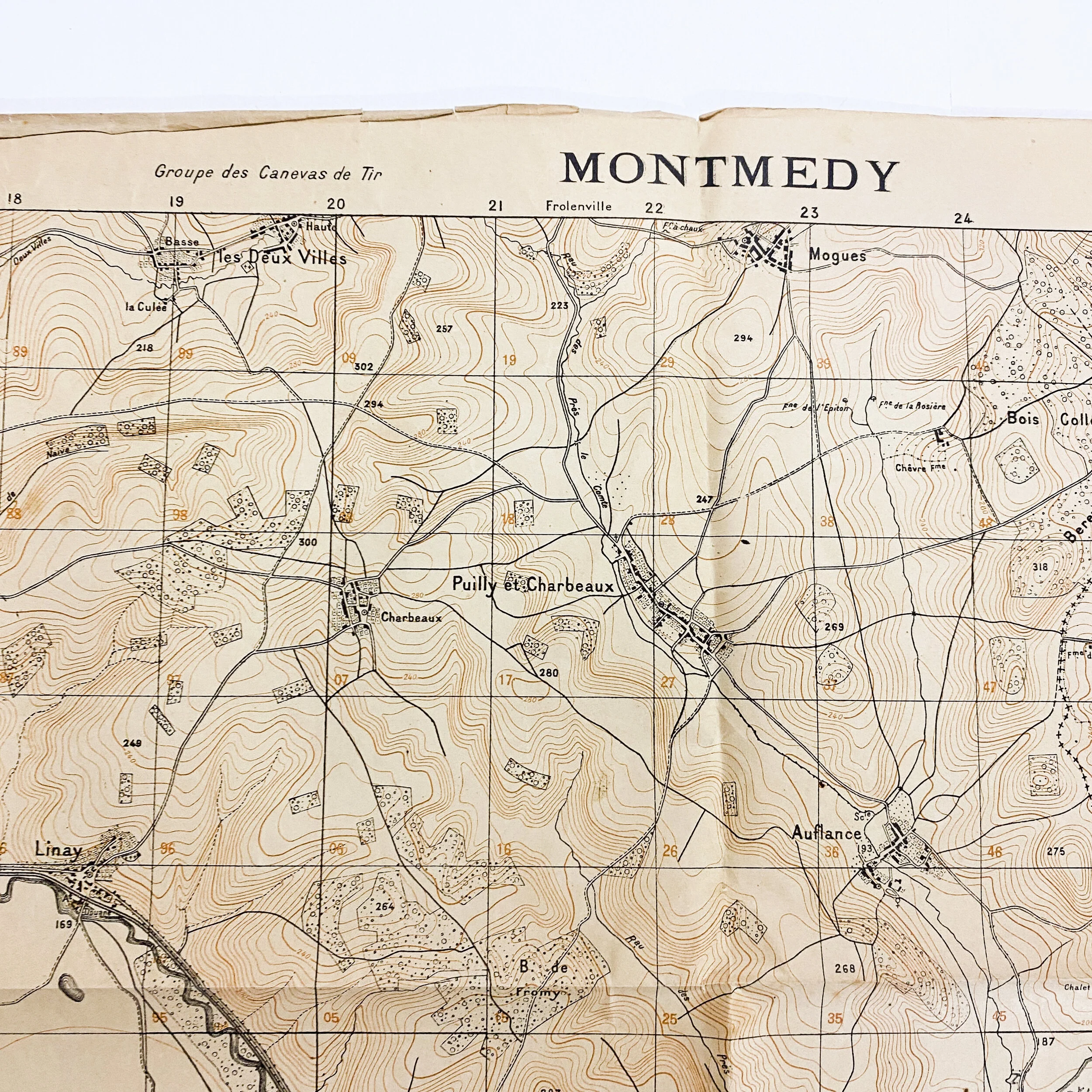




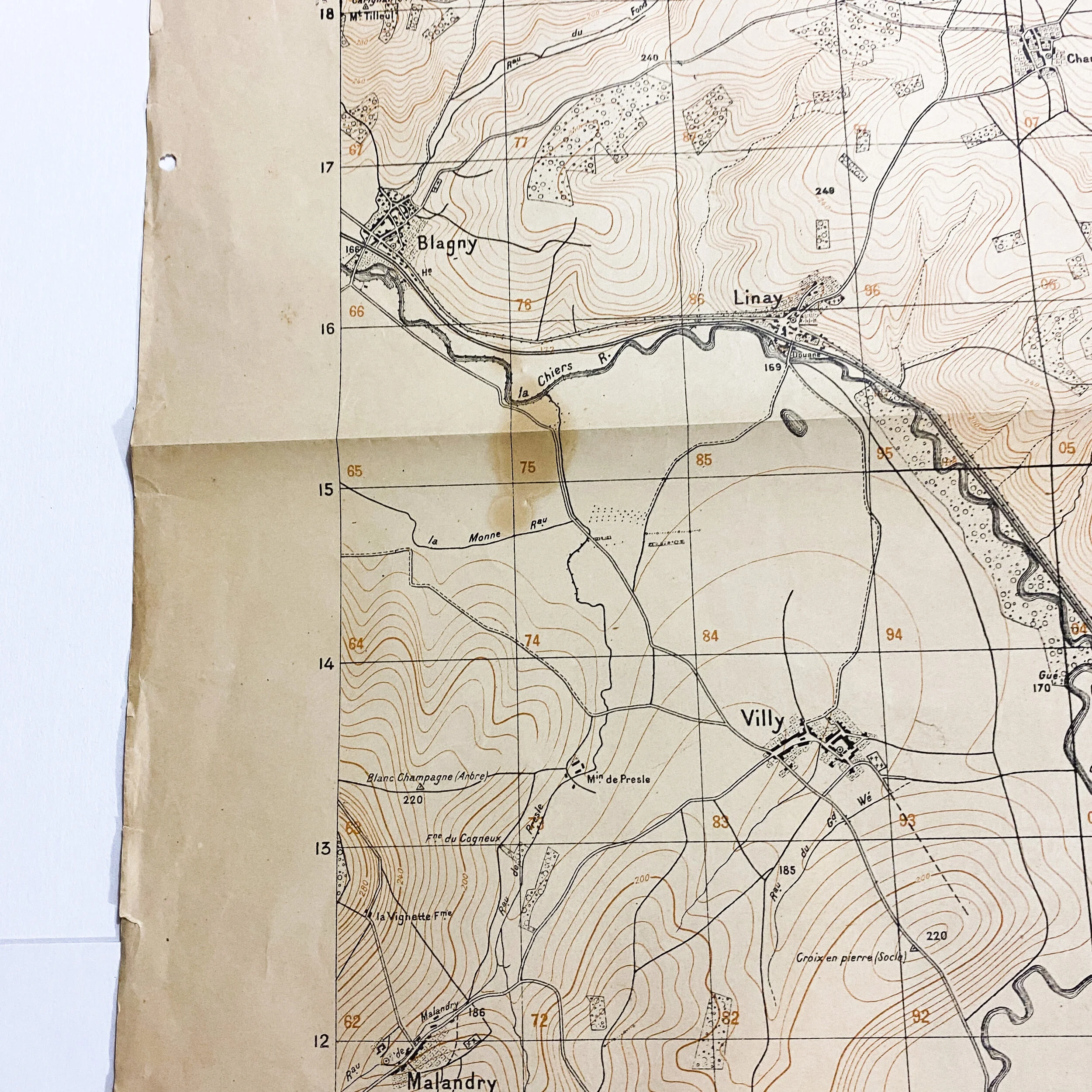
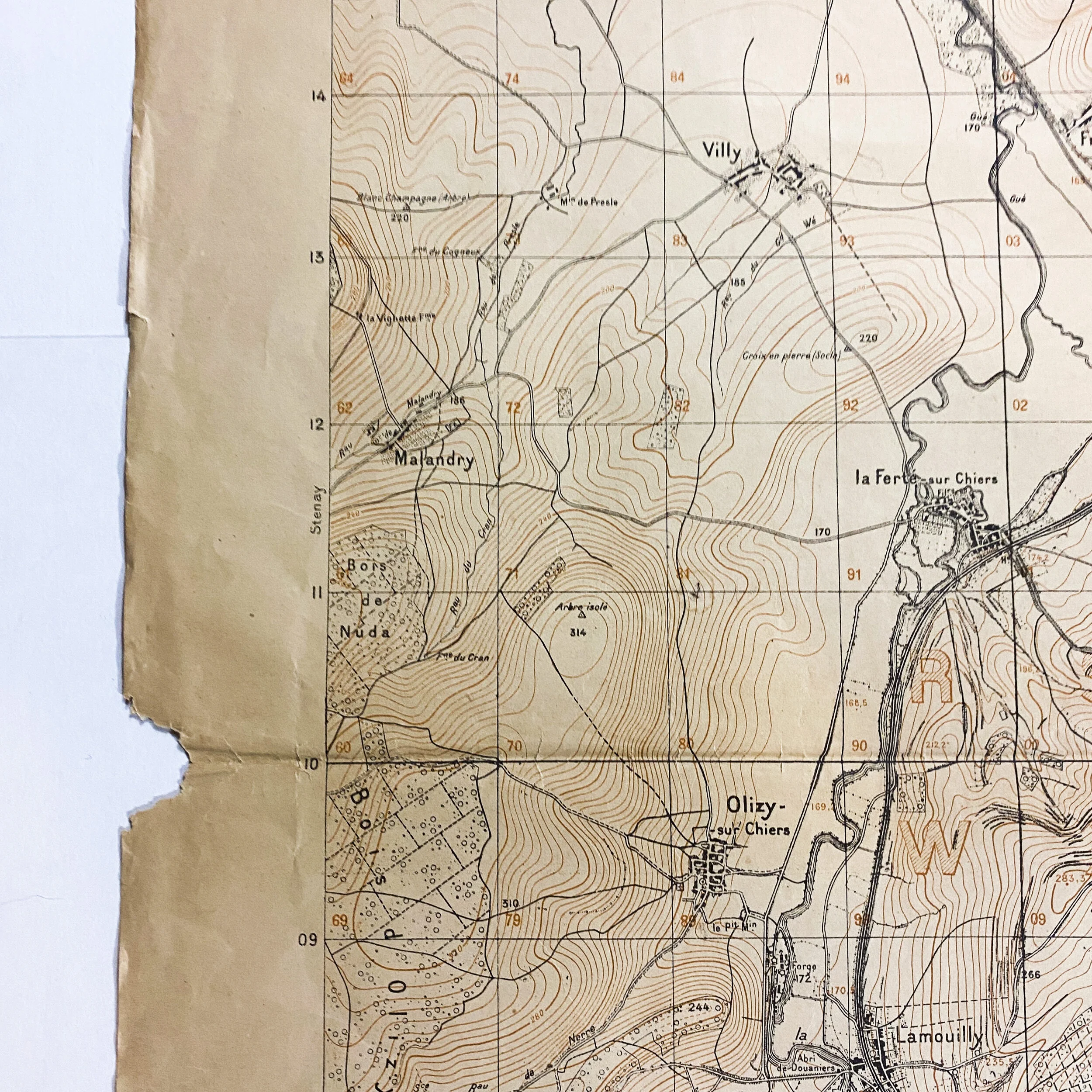


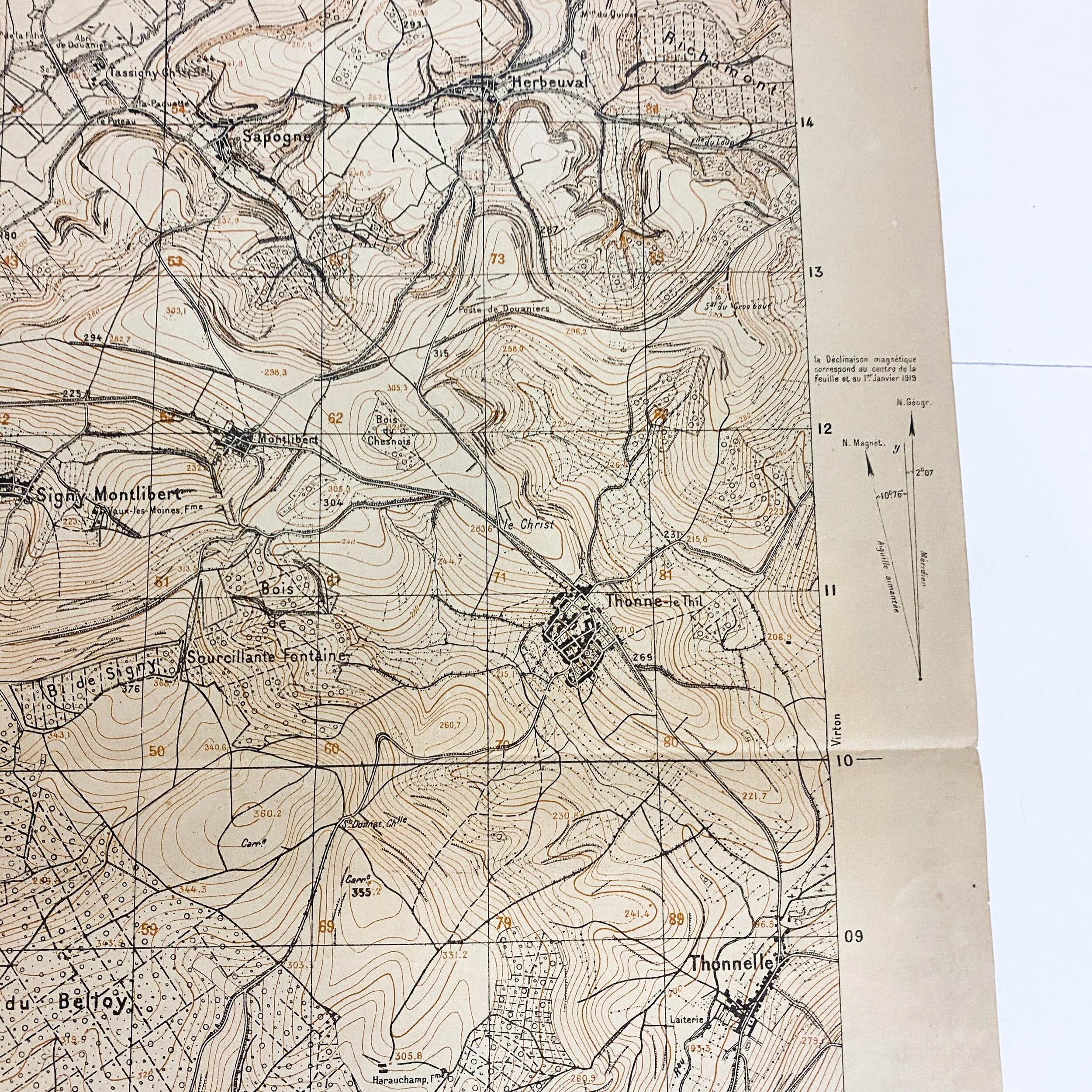
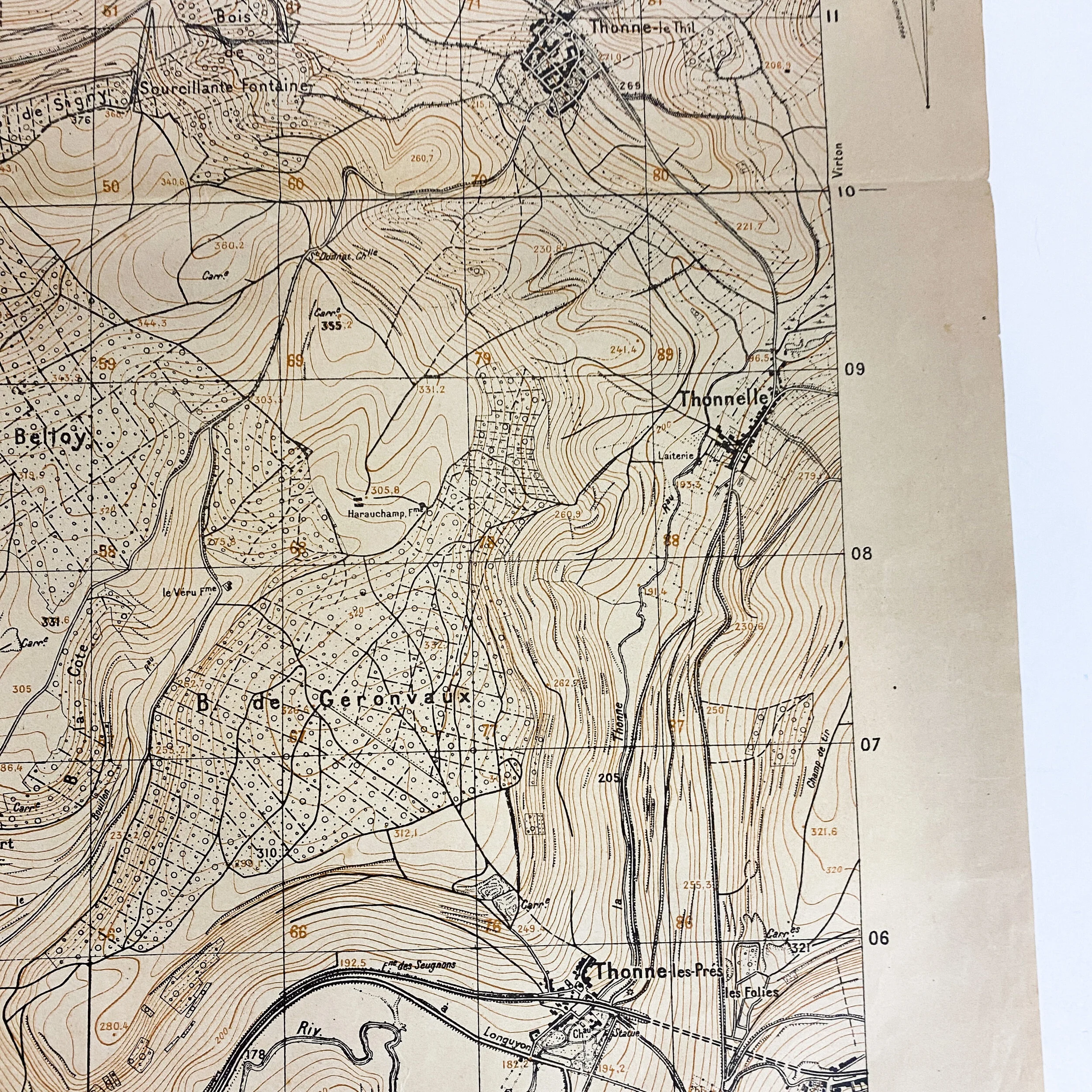
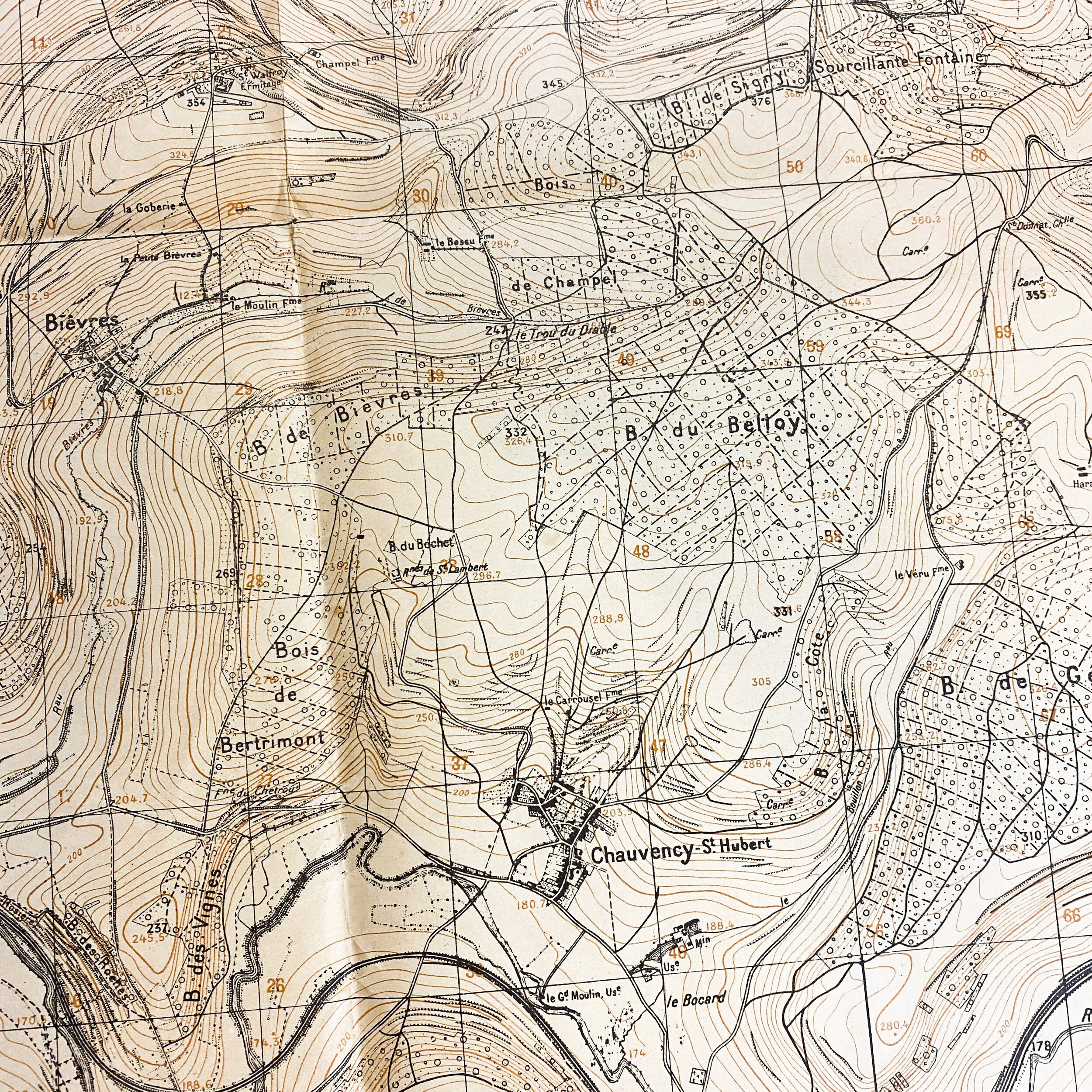

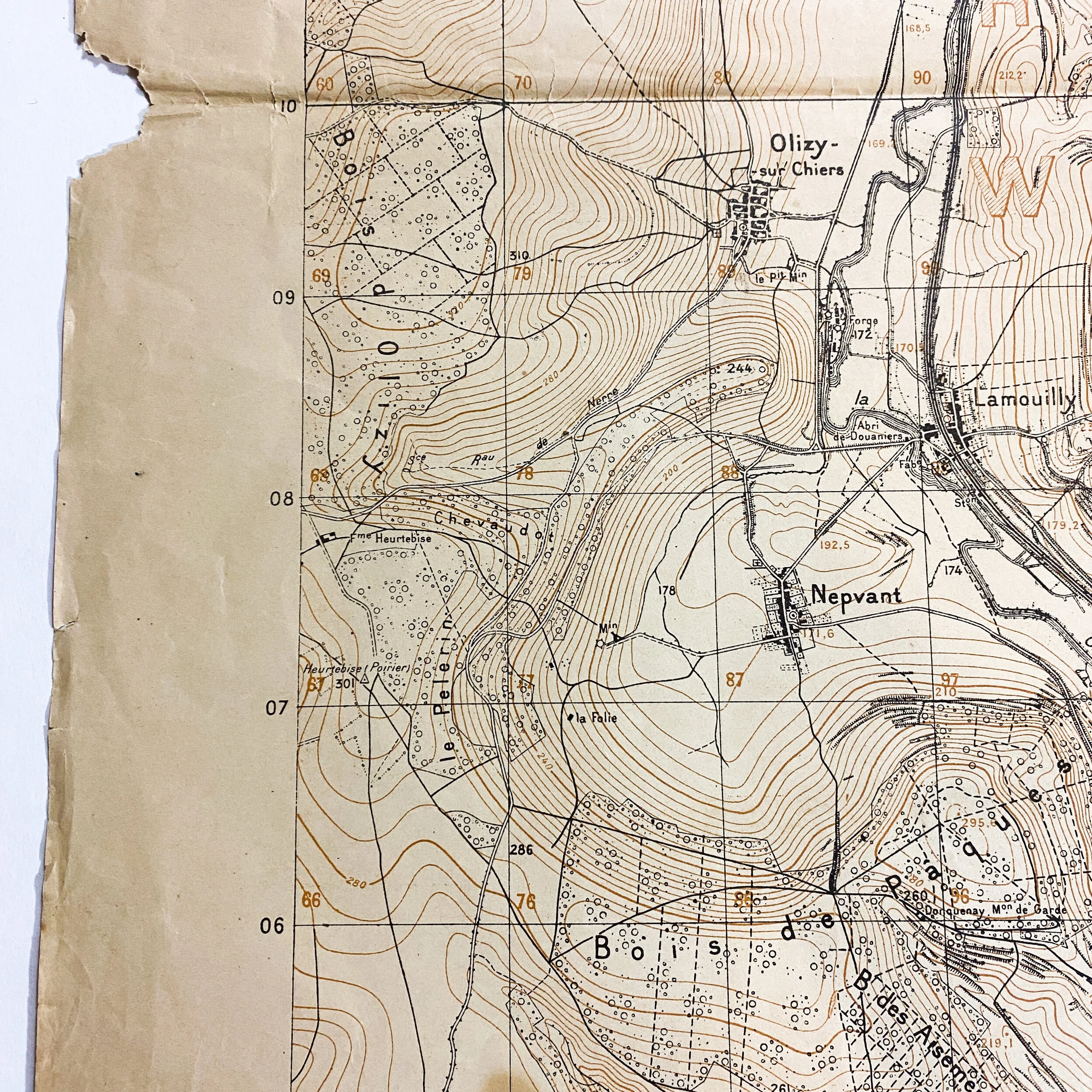
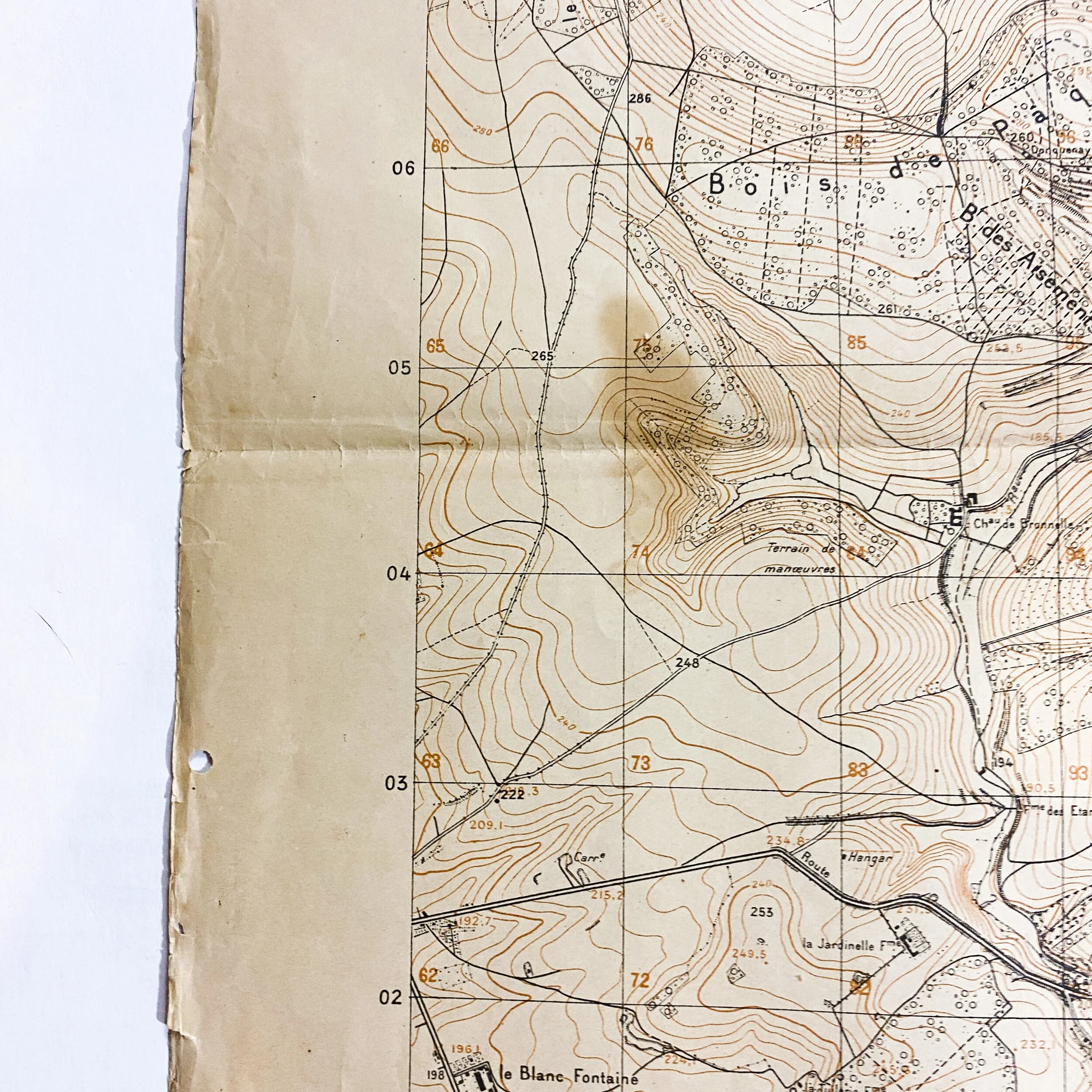

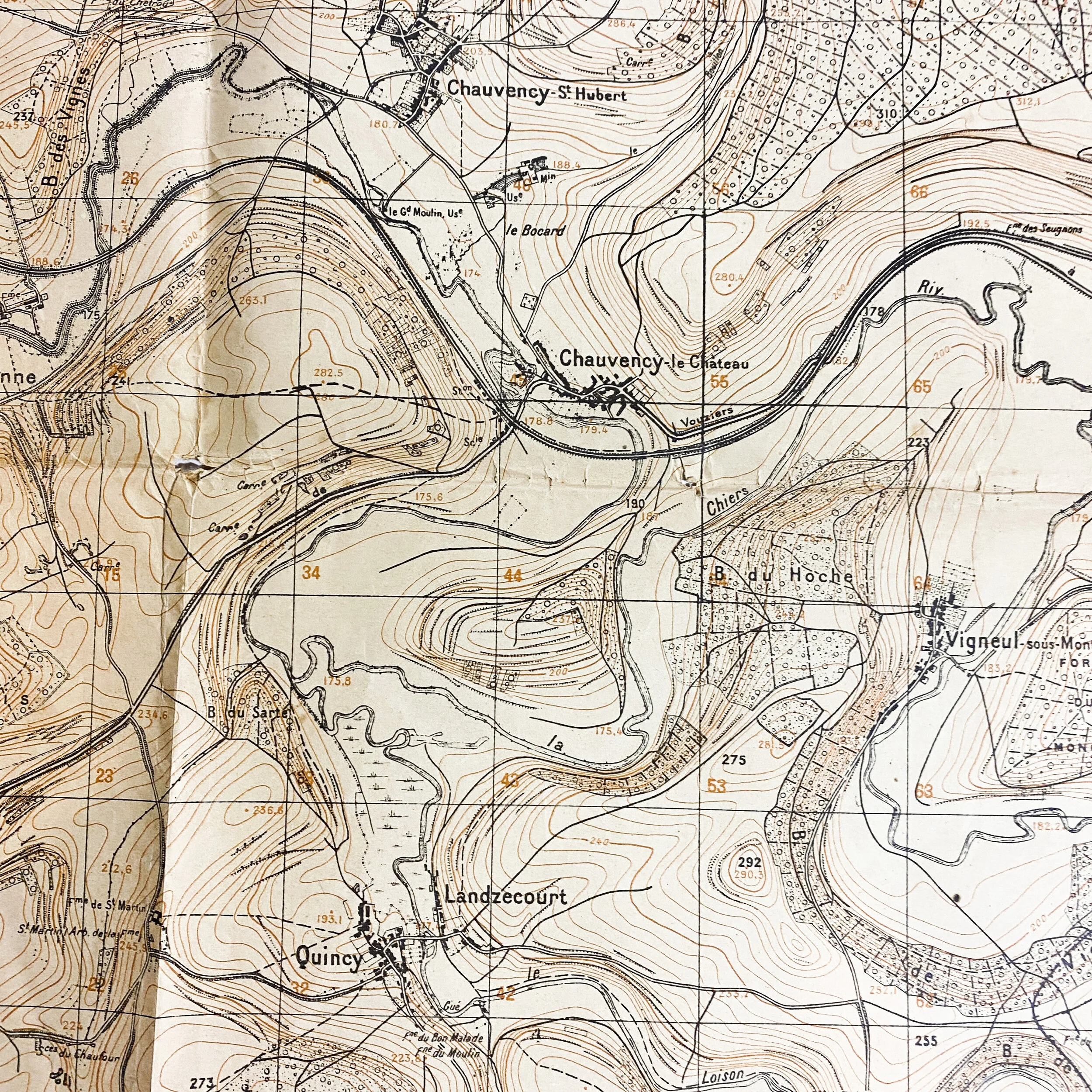
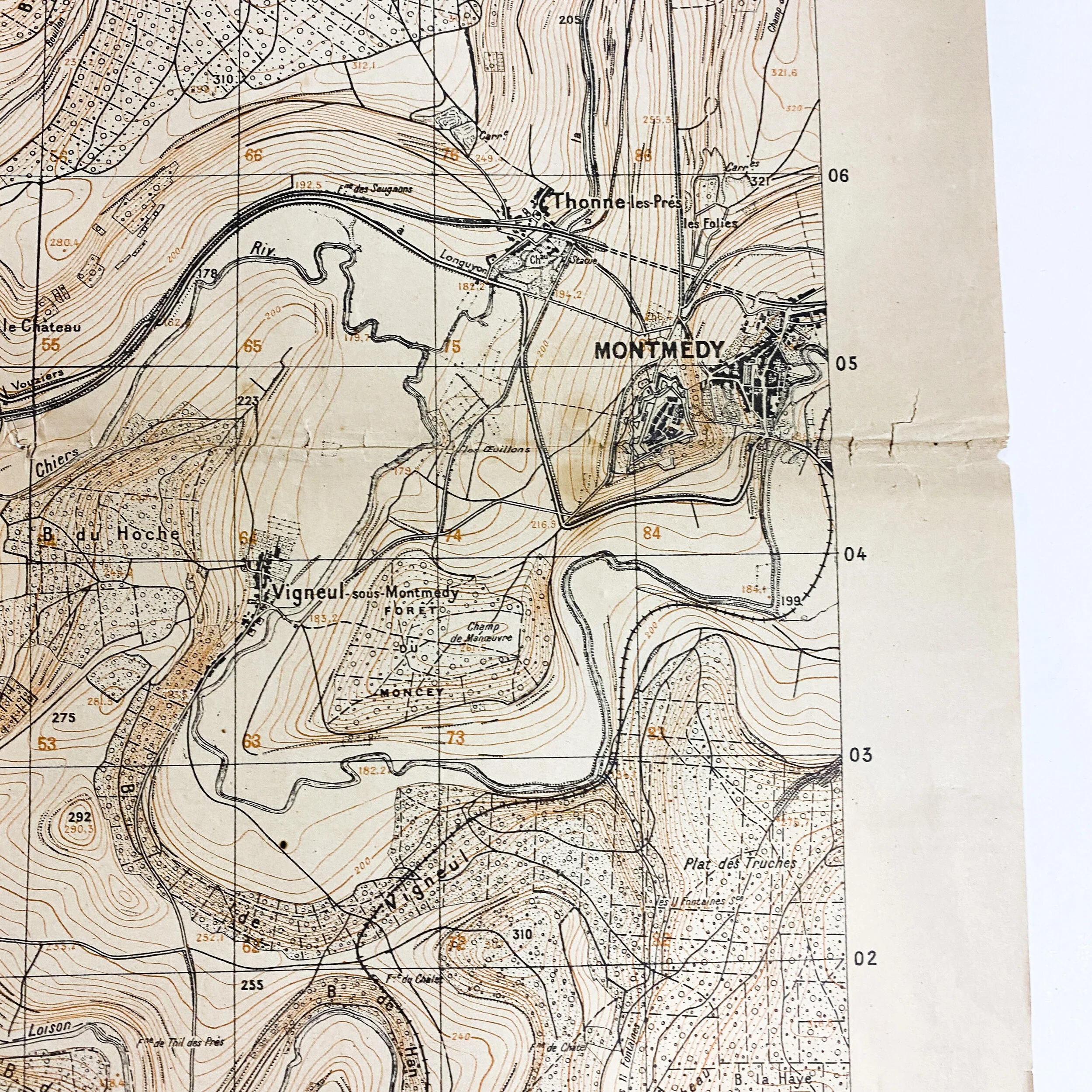
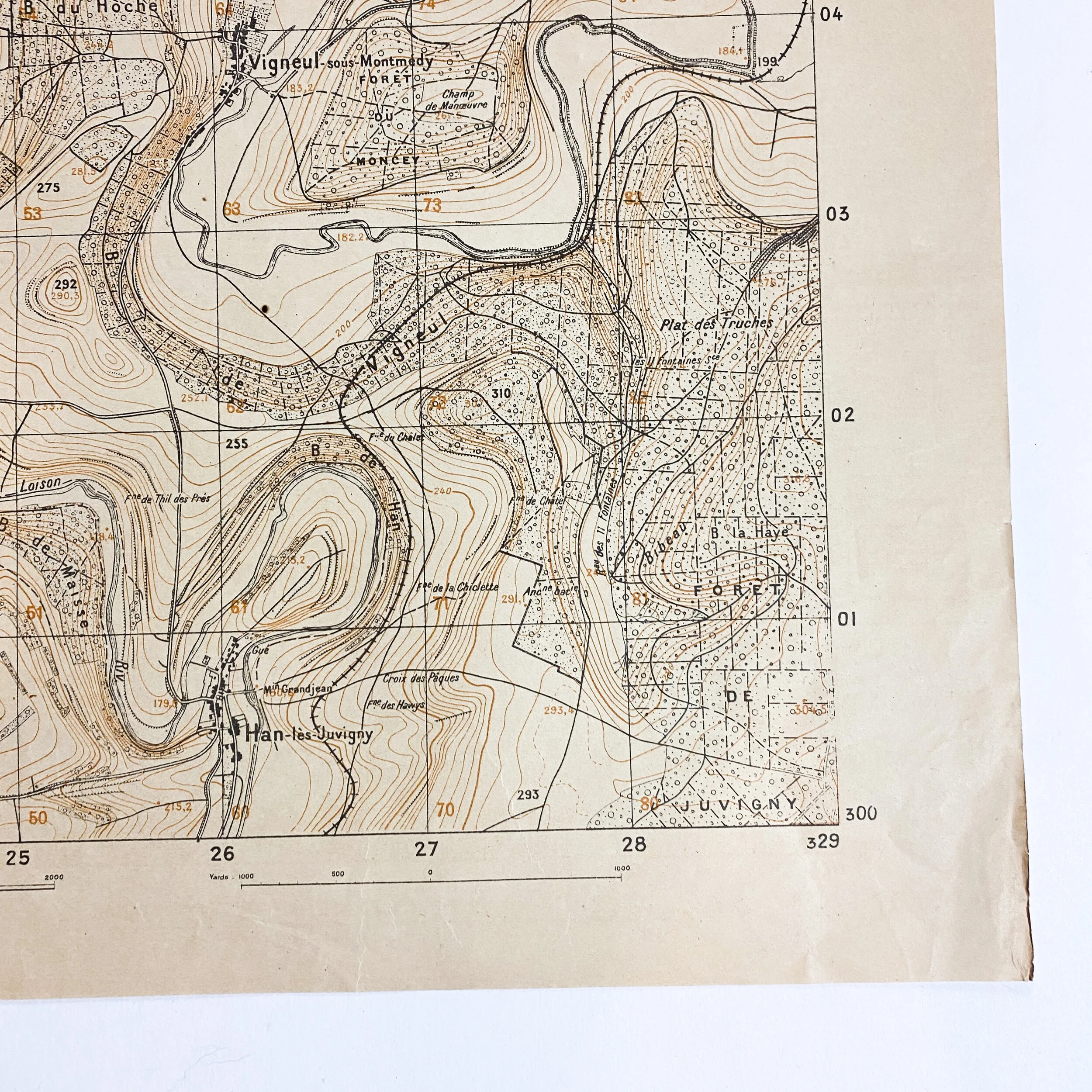





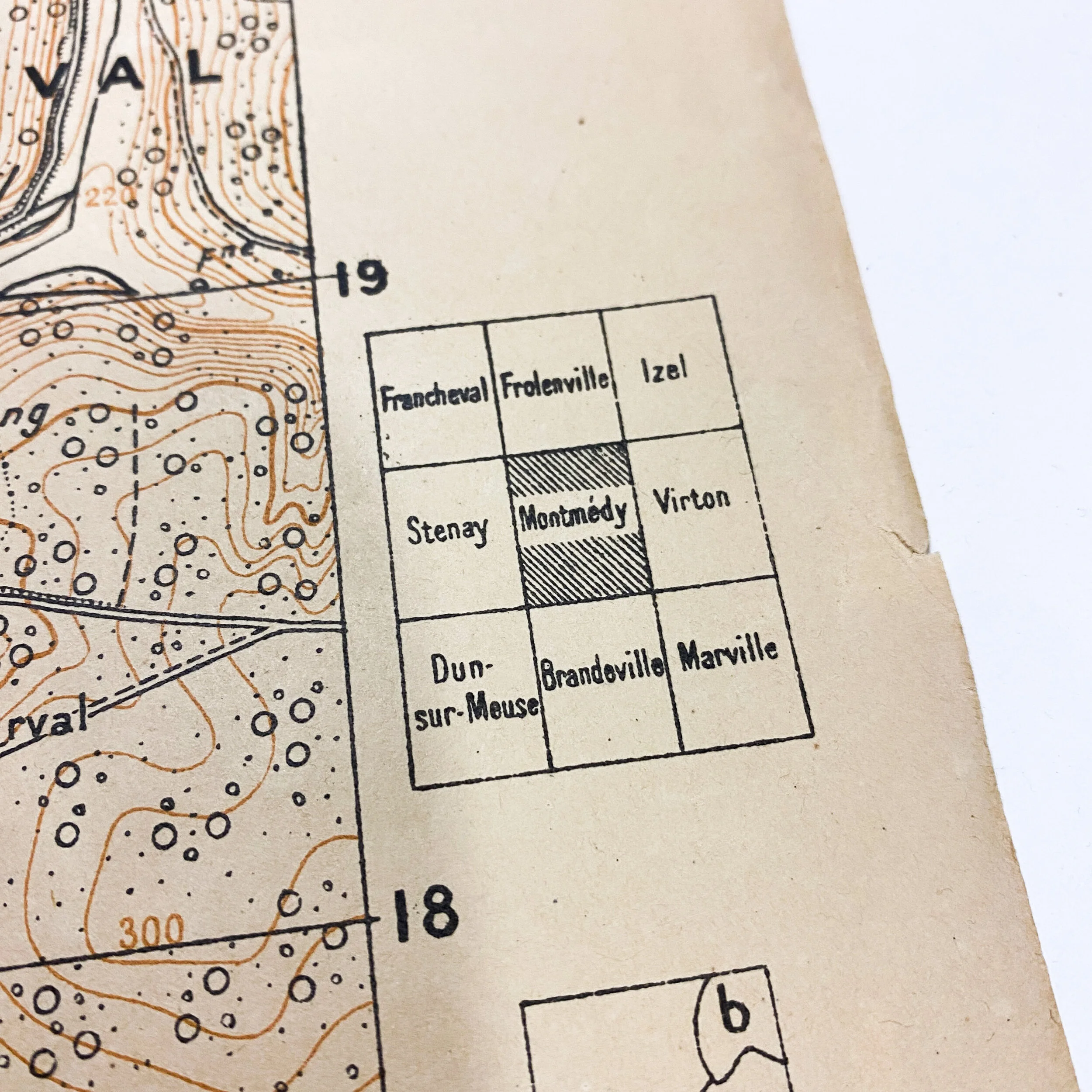


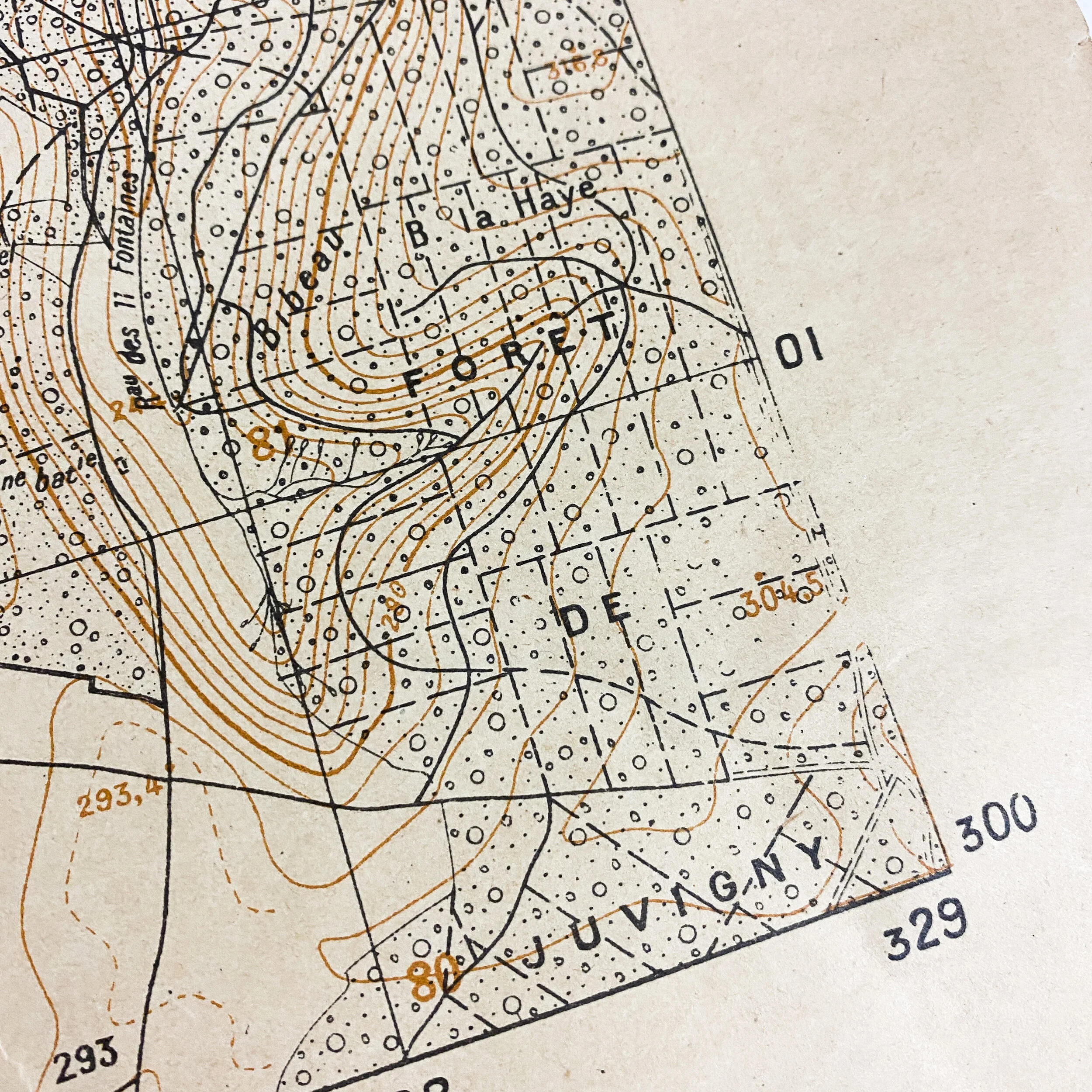
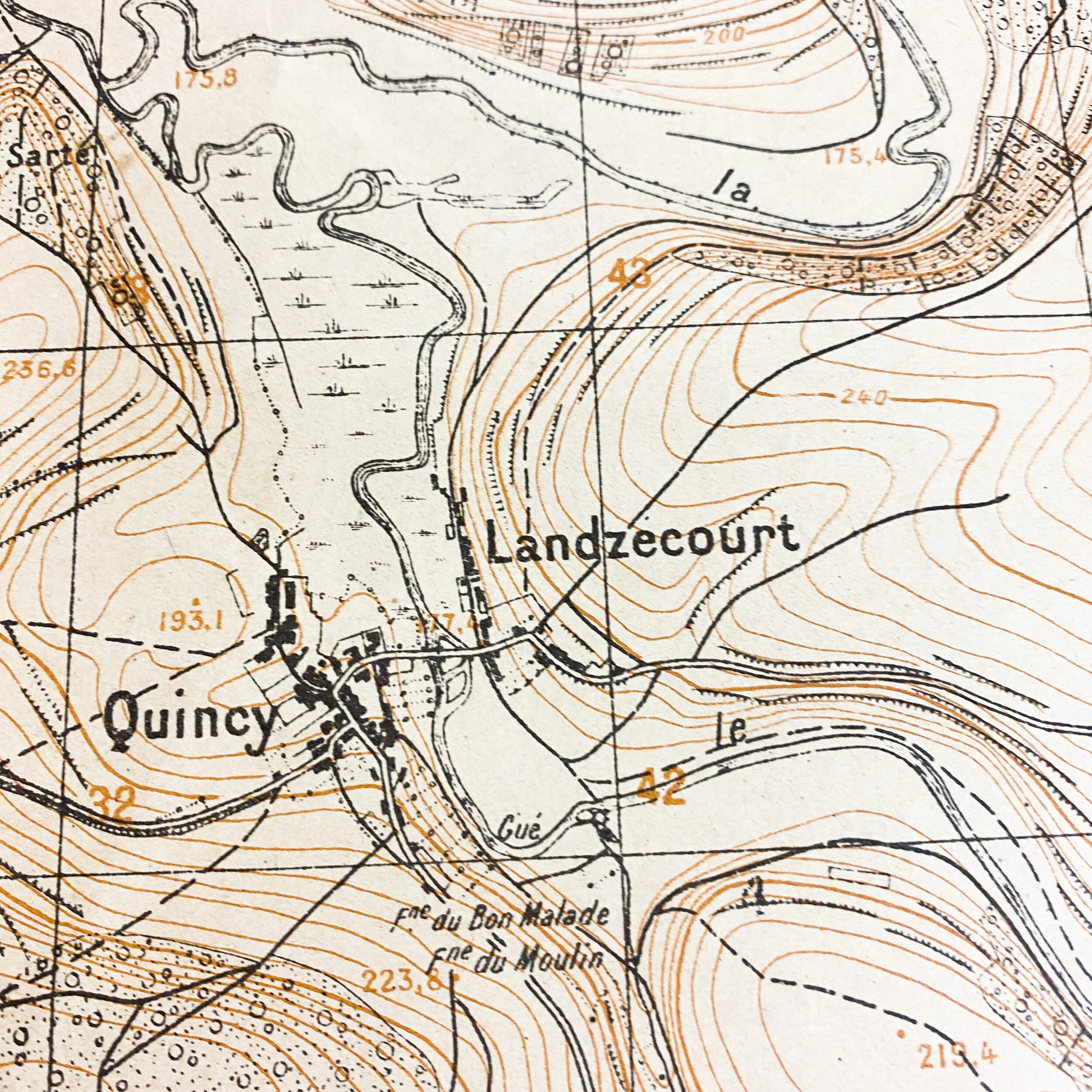

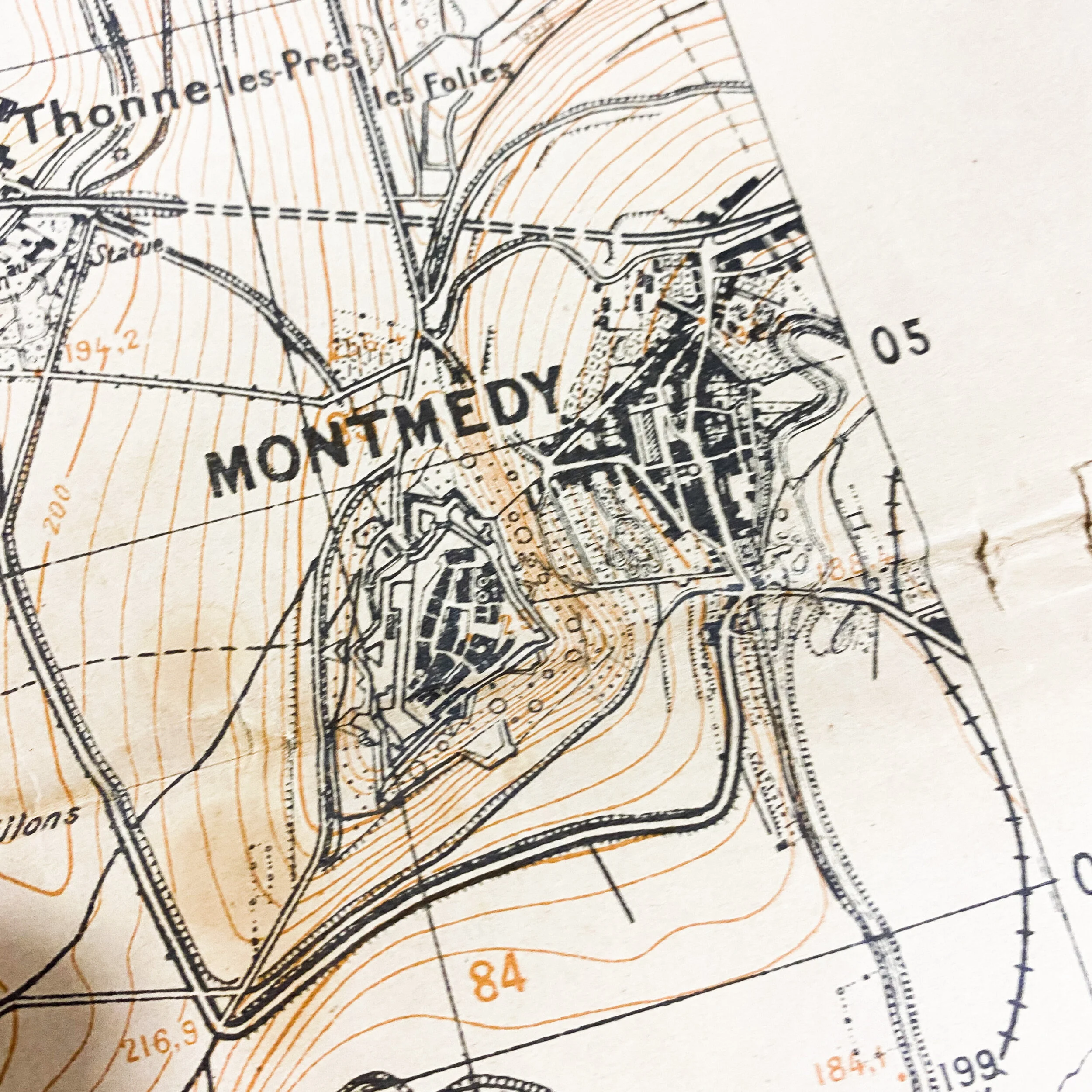
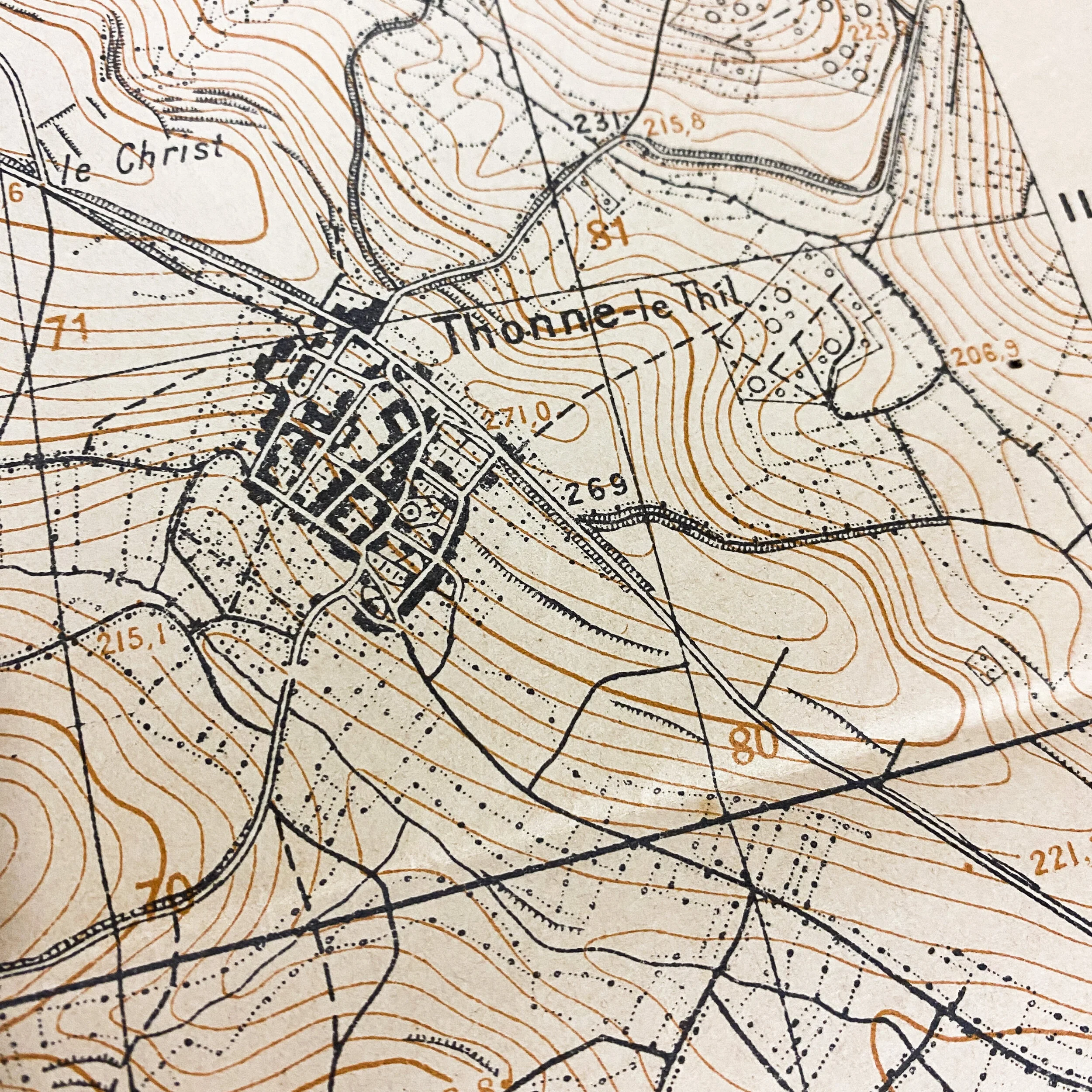

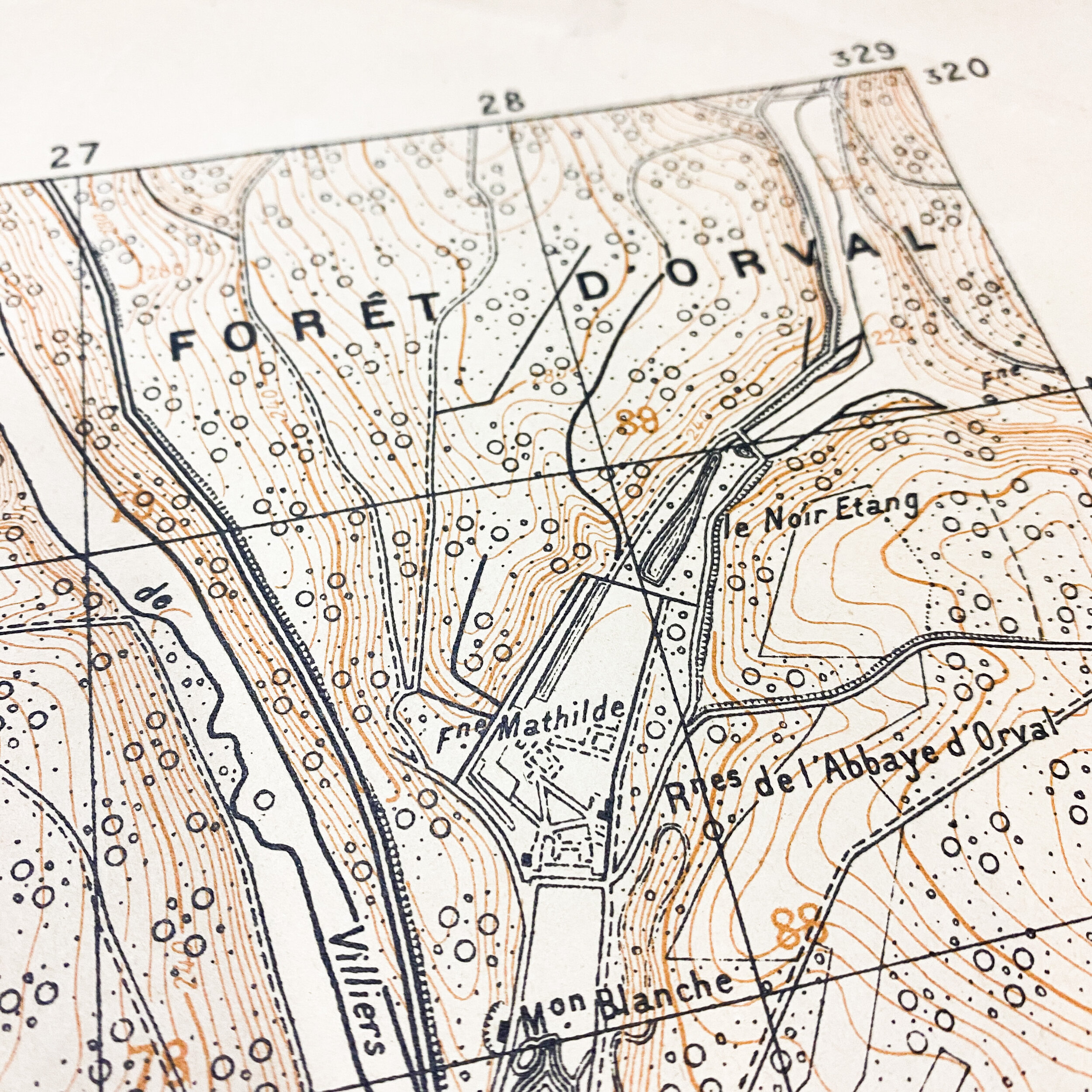
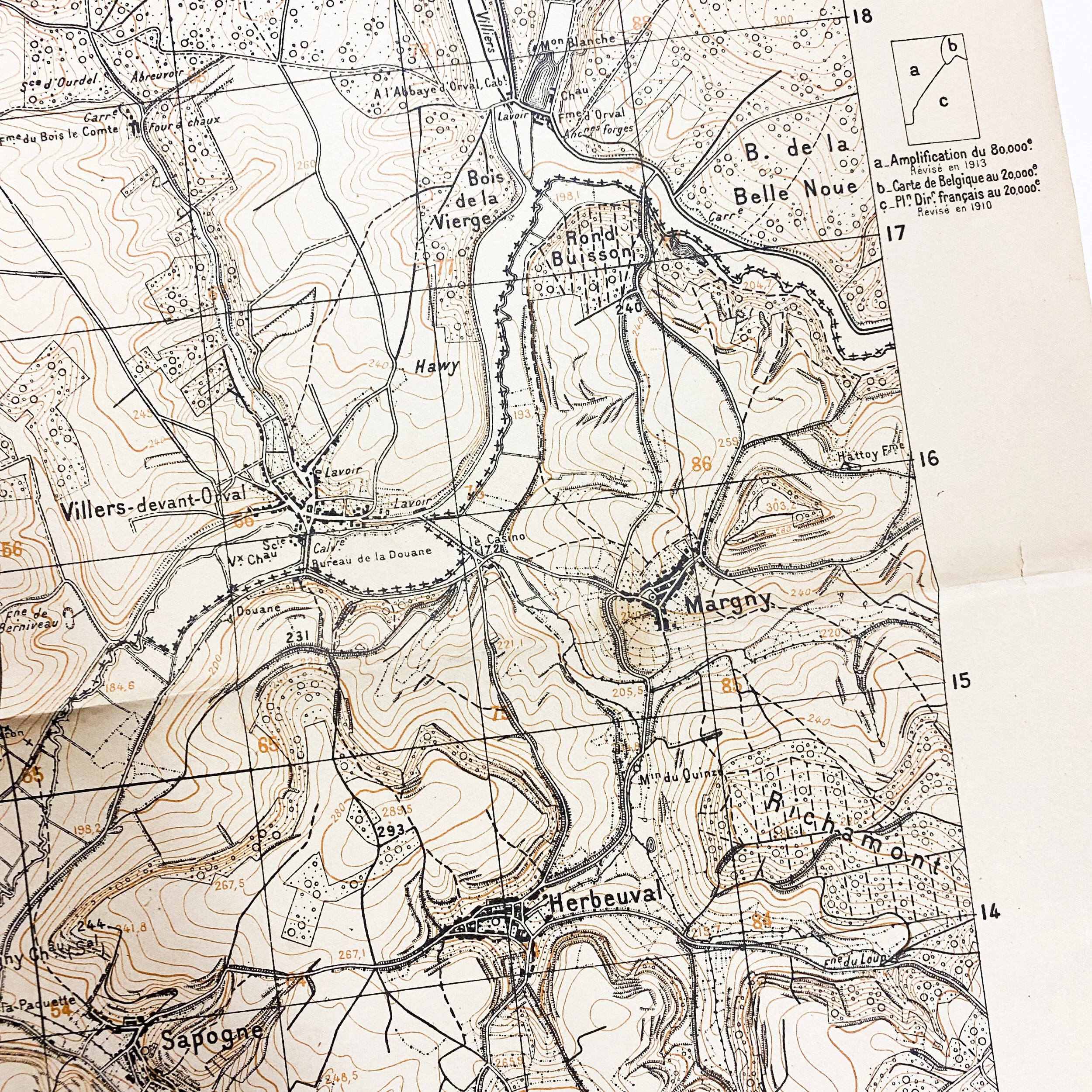
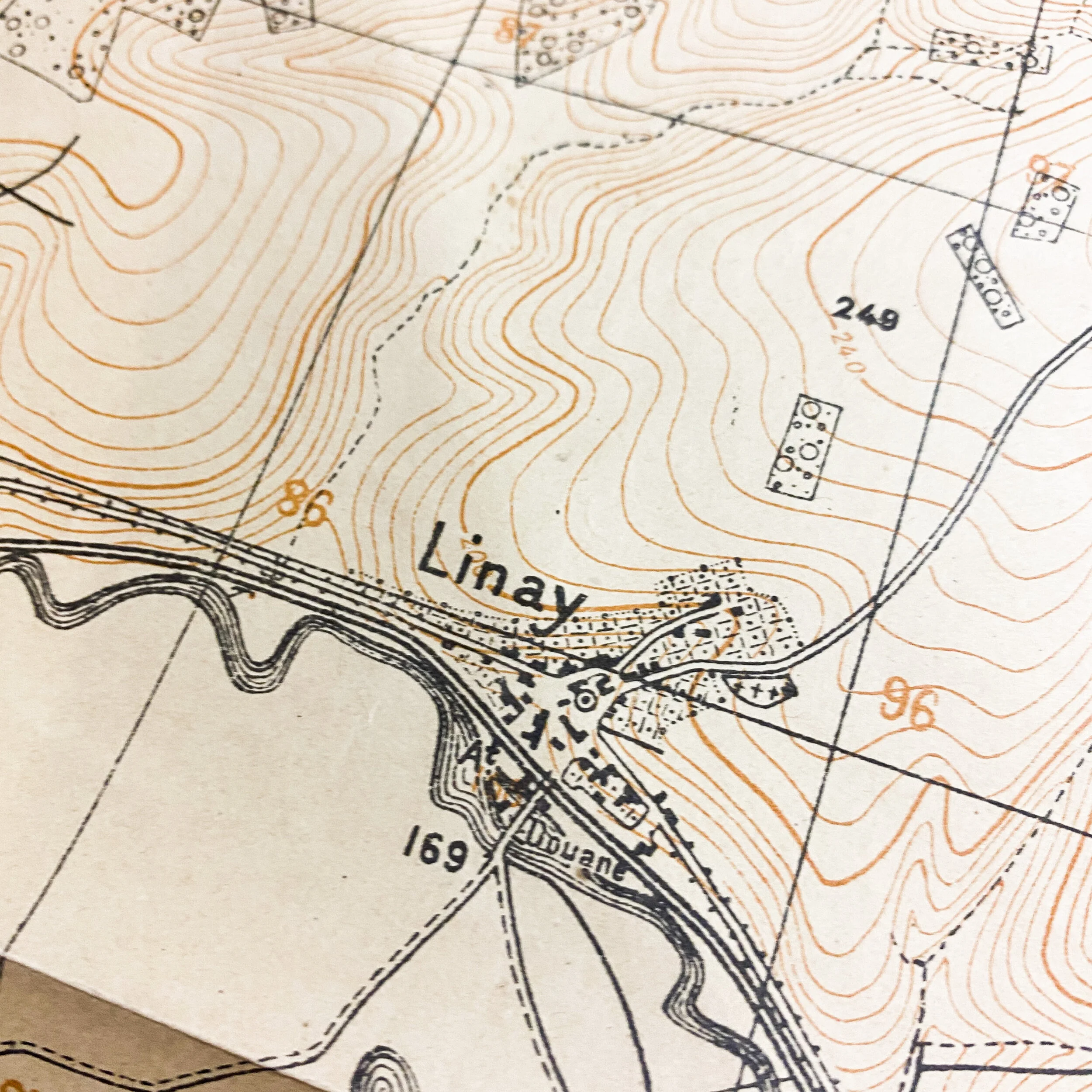
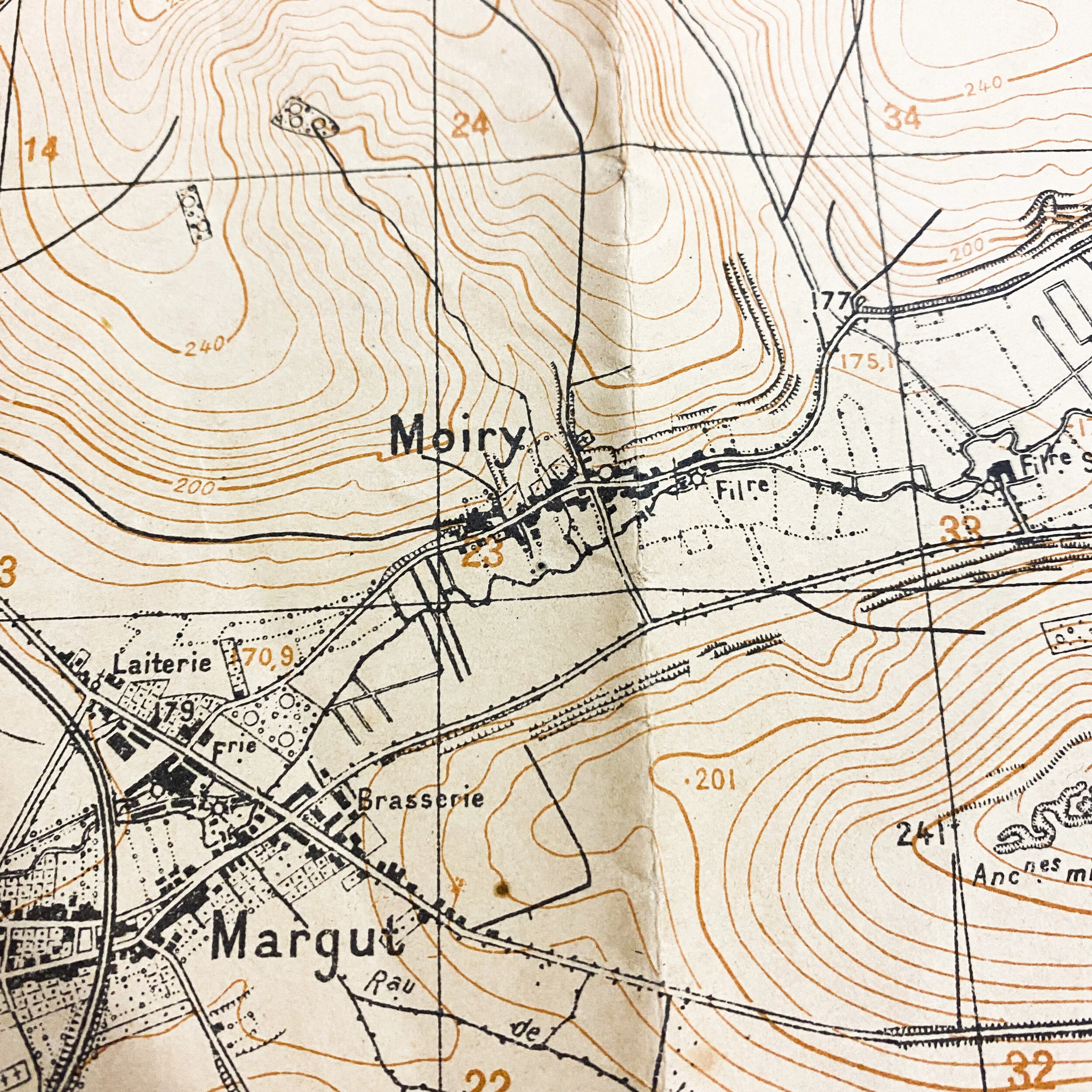
Rare* 1918 Dated -Meuse-Argonne Offensive Combat Map - "Montmedy" - Sgt. A. T. Bertolette - 108th Field Artillery
*From the ‘bring back’ map collection of Sgt. A. T. Bertolette who was an A.E.F. artilleryman and saw extensive combat over the course of WWI serving valiantly with the 28th Division, 53rd Field Artillery Brigade, 108th (heavy) Field Artillery. The 108th Field Artillery (HEAVY) is accredited battle participations in the Oise-Aisne Offensive, Meuse-Argonne Offensive, Yrpes-Lyse Offensive
Size: 29 x 42 inches
This World War 1 map French map was used by the A.E.F. and other Allies in the area of Montmedy during the Hundred Days Offensive (8 August to 11 November 1918) and Meuse-Argonne Campaign. Before the third and final phase (1–11 November) of the offensive got under way, many of the exhausted divisions of the First Army were replaced, roads were built or repaired, supply was improved, and most Allied units serving with the A.E.F. were withdrawn. On 1 November First Army units began the assault of the now strengthened German fourth line of defense. Penetration was rapid and spectacular. The V Corps in the center advanced about six miles (10 km) the first day, compelling the German units west of the Meuse to withdraw hurriedly. On 4 November the III Corps forced a crossing of the Meuse and advanced northeast toward Montmédy. Elements of the V Corps occupied the heights opposite Sedan on 7 November, thus finally accomplishing the First Army's chief mission – denial of the Sedan-Mézières railroad to the Germans. Marshal Foch, at this juncture, shifted the First Army left boundary eastward so that the French Fourth Army might capture Sedan, which had fallen to the Prussians in 1870. American units were closing up along the Meuse and, east of the river, were advancing toward Montmédy, Briey, and Metz, when hostilities ended on 11 November.
Titled “Montmedy ”, this combat map shows important towns and landmarks of the Meuse-Argonne Operations such as The Forest De Juvigny, Quincy, Baalon, Mentmedy, Thonne, and the Forest D’Orval.
This map was used during the The Meuse–Argonne offensive (also known as the Meuse River–Argonne Forest offensive, the Battles of the Meuse–Argonne, and the Meuse–Argonne campaign) was a major part of the final Allied offensive of World War I that stretched along the entire Western Front. It was fought from September 26th, 1918, until the Armistice of November 11, 1918, a total of 47 days. The Meuse–Argonne offensive was the largest in United States military history, involving 1.2 million American soldiers. It is the second deadliest battle in American history, resulting in over 350,000 casualties including 28,000 German lives, 26,277 American lives and an unknown number of French lives. Meuse–Argonne was the principal engagement of the American Expeditionary Force (AEF) during World War I. It was one of a series of Allied attacks known as the Hundred Days Offensive, which brought the war to an end. It was the largest and bloodiest operation of World War I for the AEF even if, given the scale of other battles on the Western Front, its size was limited and the operation itself secondary as it was far from the main offensive axis.
This map would have been similar to those used in the planning of attack in the area, divisional movements, as well as artillery fire support. For the added assistance of artillery firing coordinates, a transparent overlay of fine paper would have most likely been placed over this map and written on with H+ hours and firing lines ordered by headquarters.
28th Division, 53rd Field Artillery Brigade, 108th (heavy) Field Artillery WWI Battle Campaign Participations:
Oise-Aisne Offensive
August 18th - September 7th, 1918
Meuse-Argonne Offensive
September 26th - October 10th, 1918
Yrpes-Lyse Offensive
Octover 29th - November 11th, 1918
History of the 28th Division during WWI:
The first unit of the decision to go overseas arrived in France May 14th, 1918; the last element, June 11, 1918.
For training purposes the division (less artillery) was attached to the 34th British Division south of Saint-Omer, where it remained until June 9th. The division proceeded to the vicinity of Paris (June 13th) where it was attached to French troops for further training. For the same purpose the Artillery Brigade went to Camp Meueon, It rejoined the division in August 1918, When it passed to the reserve of the First Army Artillery. It later participated with the 91st Division in the Ypres-Lys Offensive, October 29th to November 11th, 1918.
From June 30th to July 27th, 1918, elements of the division were attached to various French and American divisions operating in the Chateau-Thierry Sector, and participated in the Chateau-Thierry Sector, and participated in the Champagne-Marne Defensive, and the Aisne-Marne Offensive. In the later operation the division for the first time entered the line as a unit, relieving the 39th division (French), on July 28, and remaining in line until relieved by the 32nd division on July 30th of 1918.
On August 7th the division relieved the 32nd division in the Fismes Sector and participated in the Oise-Aisne Offensive from August 18th to September 7th during the operation, severe fighting was encountered in the advance North to the Vesel River.
From September 8th until September 19th the division was moving to the Argonne, where it took over the sector extending across the Aire Valley, and in front of the Argonne Forest, on the morning of September 20th, Expecting The Outpost line which was held by the French until the night of September 25th through the 26th. In the Meuse-Argonne Offensive the division was heavily engaged from September 26th to October 9th, in which operation the capture of Varennes, Montblainville, Apremont, le Chens Tondu, and Chatel-Chenery were outstanding features. The division was relieved by the 82nd division on October 9th, and proceeded to the Thiacourt Sector, Toul, which it held from October 16th to November 11th, 1918.
During the operations the division took 921 prisoners and its casualties totaled 13,983.